Revealed: the best jobs in the countryside
The best ten jobs in the countryside are unique positions in which one won't ever get rich: they're more of a calling. We talk to those currently filling the positions.


Do you dream of being a head stalker in Scotland or a country-house curator in Kent? Do you long for a job with a view, doing something you love? Paula Lester and Emma Hughes talk to 10 rural professionals, who hold down what we think are the most enviable jobs in the countryside
The head stalker

Gary Coutts, 46, is head stalker at Balmoral
Route into job My grandfather, a gamekeeper on a nearby estate, used to take me out snaring rabbits and fishing for trout, which gripped me. My mother says I started telling her I wanted to be a keeper from the age of three, but I can't remember that. I undertook a youth-opportunity programme at Balmoral and Sandringham when I was a teenager, before taking up a permanent job here in 1984.
Best part of job I enjoy nothing more than stalking stags in the rut. Ironically, it's the busiest time of year for us, when we take out a lot of guests on the hill, but I find it relaxing and rewarding. Balmoral is still one of the main deer forests in Scotland-we have a good, healthy population of red and roe deer, plus some grouse on the higher ground. The scenery-ancient Caledonian pine forest-is spectacular. Every day is different: you never know what you're going to see, learn or hear wildlifewise. It's also a privilege to work for, and be in the company of, members of the Royal Family. Most challenging aspect The fight with the weather. We get serious snow and frost, which can linger and cause us to get behind in our work. In 1983, it got down to -27˚C-we even had frost in the house! Proudest moment Being appointed head stalker in 2008 and picking up the Royal Victorian Medal for long service in 2003.
Advice for aspiring stalkers You've got to show a real keenness and willingness to learn. It's not a 9-5 job and you must be prepared to work all hours, for little pay-you'll be rewarded in lots of other ways. This job is born into you-it's never a chore, it's a pleasure.
The forester
Exquisite houses, the beauty of Nature, and how to get the most from your life, straight to your inbox.
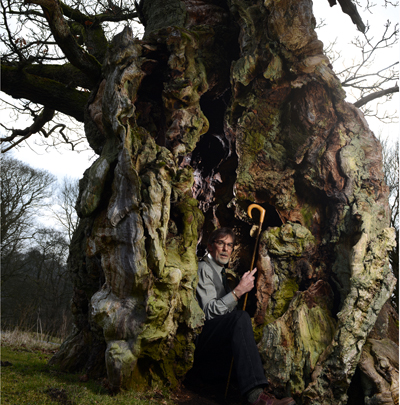
Roy Lingard, 60, is head forester at Bolton Abbey, Yorkshire, and Chatsworth, Derbyshire
Route into job
I left school at 15 and worked in a factory, before getting a job with a landscape gardener. After 15 years, I was made redundant, and asked the estate if they had a vacancy. John Cumberland, who'd been recruited at Bolton Abbey to improve the woodlands, gave me a job, and later arranged for me to study forestry at Newton Rigg College in Cumbria. When he retired in 1996, I became head forester, then, when the Chatsworth head forester retired in 2007, I took on responsibility for both estates. Best part of job It's rewarding to feel we're continuing our predecessors' work and there's a sense of purpose in creating a legacy that will last for decades, if not centuries. I'm passionate about re-establishing native woodlands, too- I like a mix of Scots pine and birch, but we have some fantastic 700-year-old oaks at Chatsworth.
Most challenging aspect Bringing together all aspects of managing woodland and planning for the future-you have to think long-term. Forestry must pay its way, so I have to keep a constant eye out for opportunities to sell timber.
Proudest moment Receiving a 25-year longservice award from the Duke of Devonshire in 2009. Sometimes, I have to pinch myself that I got here. To be head forester of two estates is a job I could not have dreamed of 30 years ago.
Advice for aspiring foresters Forestry is a very practical occupation, so it's important to gain experience of the basics, such as fencing, tree harvesting and weeding. Experienced forestry staff will be able to tell immediately if you know what you're talking about and will respect that. The country-house curator

Emma Slocombe, 39, is curator at Knole, Kent
Route into the job After finishing a degree in Fine Art, I fell in love with country houses when working as a volunteer at Knightshayes Court in Devon. I then did a masters' degree in Museum Studies, and spent three years as assistant curator of decorative arts at Temple Newsam House, Leeds, before securing my current post as curator for the National Trust.
Best part of job Curatorial work for the Trust is ever-changing and incredibly diverse. Its portfolio includes Knole, Scotney Castle, Sissinghurst and Smallhythe Place, so I can climb a scaffold to look at timber-framed building repairs with a surveyor, discuss the preservation of theatrical costume with conservators, walk around a 15th-century designed landscape with a team of archaeologists and visit the archives with volunteers, all within the space of a week.
Most challenging aspect The breadth of the work can mean I don't feel I have enough hours in the day. I'm lucky enough to be seconded to the Inspired by Knole project, which will secure the future of an incredible piece of the nation's cultural heritage. I specialise in historic furnishing textiles, so researching the 17th-century royal-furniture collection at Knole is heaven.
Advice for aspiring curators Curatorial work requires a fascination for the lives that have gone before us and their material legacy, a passion for and dedication to your subject, and a determination to share your enthusiasm with others. Getting experience and support early, as well as academic qualifications, is essential. (01732 462100; www.nationaltrust.org.uk/ knole)
The curate

The Rev Mark Elston Zorab, 59, is honorary assistant curate at the St Arvans group of parishes, Monmouthshire, and also works as a chartered surveyor
Route into job My father (a London hospital consultant) encouraged me to attend the Royal Agricultural College, and I trained in the rural-practice division of the Royal Institution of Chartered Surveyors. Then, in 1994, I was ordained to serve as non-stipendiary curate -even St Paul earned his own living, as a tent-maker-at five rural churches, including St Deiniol's at Itton, where the Curre & Llangibby foxhounds are kennelled.
Best part of the job Ministering to all kinds of people in their different stages of life. We worship in the same Celtic and medieval buildings as our ancestors-at St Arvans, we have a wonderful 10th-century Celtic wheel cross and we're trying to raise £200,000 to renovate the roof.
Most challenging aspect Two of the churches have no electricity or road access and we walk across the fields in all weathers, so winter is always a challenge, but often very beautiful. Making time for everything can be tricky. I have a busy pastoral, family and business life and an active working cocker spaniel called Dot, who accompanies me to church and sits obediently at the back.
Proudest moment In the Church, pride is something to avoid. However, I love fishing for trout and salmon and, as a former master of the Curre, I continue to support the hunt, although I don't ride any more. Both Chepstow racecourse and the point-to-point course at Howick (where I used to race-ride) are within the parishes, so I go there, too-I'm very fortunate.
Advice for aspiring vicars The future of the rural parishes may largely rest with the properly trained, voluntary ordained ministry, so it could be you. Make time for your family and for daily prayer and do turn the mobile off sometimes, because you're never off duty.
The harbour master
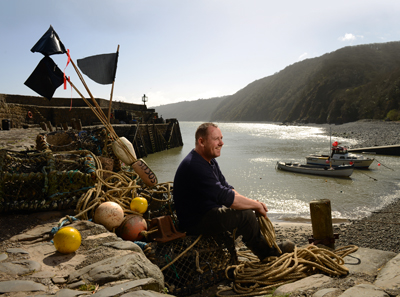
Stephen Perham, 48, is harbour master at Clovelly, north Devon
Route into job I'm a fisherman. My father was harbour master here and my older brother took over from him in 1983. There were a few interim harbour masters, then my cousin had the job, and then it was me. This is my 10th year.
Best part of job It's more of a privilege than a job. I have the oldest wooden boat here in Clovelly, and I love taking people out and showing them the harbour from the sea-that's the best way to see it. In the summer, we get a lot of visitors in their yachts; last year, I had one man who shouted up to me ‘I'm home!' when he arrived. They're a great bunch, very colourful. Most challenging aspect In 1998, two of our fishermen drowned and a couple of years ago, a lifeboatman died in an accident. In a small community, all these jobs become one job. There's also the fact that the fishing industry is changing and there aren't many young men coming in now. My hope is that the harbour survives.
Proudest moment Following on from my father is what makes me proud-the fact that my family has been involved for such a long time.
Advice to aspiring harbour masters I spend my days making sure the harbour runs safely and everyone is properly looked after. Clovelly is a very beautiful one - antique in many respects - but there are lots of regulations to adhere to. It's not just a pretty little place with a few boats bobbing around.
The ghillie

George Inglis, 60, is the Duke of Northumberland's ghillie at Dryburgh North, Borders
Route into job I didn't come through the traditional father-and-son route-I was a paying guest at Dryburgh for about 10 years when the ghillie had a stroke and I applied for the job. I thought I'd give it a year and see how it went-that was 23 years ago and I'm still here! I'd known from when I was 16 that I was going to get into fishing, however-I've always had a passion for it.
Best part of job Seeing people's enjoyment when they catch a fish, especially when a novice lands their first salmon on their first day on the river-that really gets me. I also take pleasure from doing bank maintenance in the summer, cutting the grass so it looks tidy. I had a good job in the building trade in Edinburgh when I was younger, but I wouldn't change this job for the world. I'm in a privileged position and I love it. I just hope I can keep working here until I'm 80.
Most challenging aspect Adverse weather conditions, particularly an east wind. Or when the river's too big or too low and you have to work hard to keep your guests' enthusiasm up.
Proudest moment When the Duke of Northumberland bought the beat in 2000, I thought it might mean a change of career for me. But he decided to take me on and I felt proud that he wanted to keep me. The Duke is as keen as mustard [on fishing] and brilliant to work for. We've got a great relationship and can have a bit of fun.
Advice for aspiring ghillies Take a day on the most expensive beat on the river where you're hoping to get a job. Get to know your beat- understand its heights and moods, do your homework and take advice from other ghillies.
The tenant farmer
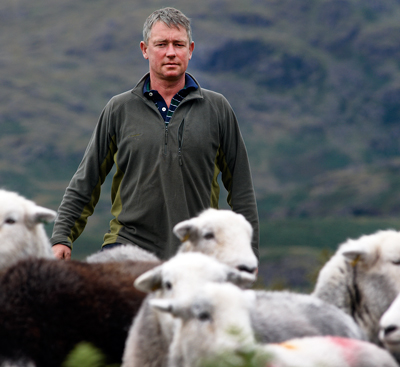
Jon Watson, 49, is a hill farmer in Cumbria
Route into job
I was always interesed in farming, although I'm not from a farming background. I went to agricultural college, but the prospects of getting a tenancy were virtually zero, so I went into wagon-driving, transporting livestock around. After ten years I could afford my own little flock (mostly mules). I then became a farm manager in North Yorkshire, but the foot-and-mouth outbreak of 2001 was the push I needed - we lost all our stock- so we applied for the tenancy here in 2002.
Best part of the job
On a beautiful day, with lbue skies and the sun shining, it's the best job in the world. I love going up onto the fells with the dog.
Most challenging aspect
The weather. The thing that makes this job so wonderful is also the biggest drawback. You have to do the same work irrespective of what it's like outside.
Proudest moment
We've had Great Taste Awards for all our Yew Tree Farm produce, including our Herdwick mutton, which has also been recognised by the National Trust. People want traceability now and they're appreciating what we do.
Advice for aspiring farmers
Go and try it first - it's a fantastic life but it's very, very hard. (10539; http://yewtree-farm.com and www.heritagemeats.co.uk)
The head stalker

Gary Coutts, 46, is head stalker at Balmoral
Route into job My grandfather, a gamekeeper on a nearby estate, used to take me out snaring rabbits and fishing for trout, which gripped me. My mother says I started telling her I wanted to be a keeper from the age of three, but I can't remember that. I undertook a youth-opportunity programme at Balmoral and Sandringham when I was a teenager, before taking up a permanent job here in 1984.
Best part of job I enjoy nothing more than stalking stags in the rut. Ironically, it's the busiest time of year for us, when we take out a lot of guests on the hill, but I find it relaxing and rewarding. Balmoral is still one of the main deer forests in Scotland-we have a good, healthy population of red and roe deer, plus some grouse on the higher ground. The scenery-ancient Caledonian pine forest-is spectacular. Every day is different: you never know what you're going to see, learn or hear wildlifewise. It's also a privilege to work for, and be in the company of, members of the Royal Family. Most challenging aspect The fight with the weather. We get serious snow and frost, which can linger and cause us to get behind in our work. In 1983, it got down to -27˚C-we even had frost in the house! Proudest moment Being appointed head stalker in 2008 and picking up the Royal Victorian Medal for long service in 2003.
Advice for aspiring stalkers You've got to show a real keenness and willingness to learn. It's not a 9-5 job and you must be prepared to work all hours, for little pay-you'll be rewarded in lots of other ways. This job is born into you-it's never a chore, it's a pleasure.
The forester
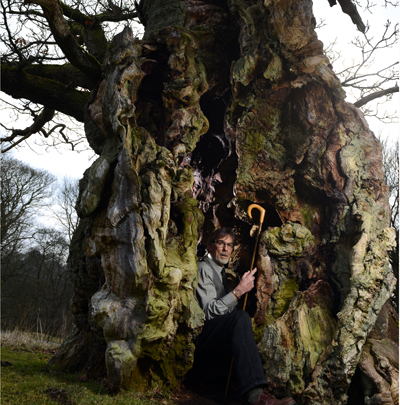
Roy Lingard, 60, is head forester at Bolton Abbey, Yorkshire, and Chatsworth, Derbyshire
Route into job
I left school at 15 and worked in a factory, before getting a job with a landscape gardener. After 15 years, I was made redundant, and asked the estate if they had a vacancy. John Cumberland, who'd been recruited at Bolton Abbey to improve the woodlands, gave me a job, and later arranged for me to study forestry at Newton Rigg College in Cumbria. When he retired in 1996, I became head forester, then, when the Chatsworth head forester retired in 2007, I took on responsibility for both estates. Best part of job It's rewarding to feel we're continuing our predecessors' work and there's a sense of purpose in creating a legacy that will last for decades, if not centuries. I'm passionate about re-establishing native woodlands, too- I like a mix of Scots pine and birch, but we have some fantastic 700-year-old oaks at Chatsworth.
Most challenging aspect Bringing together all aspects of managing woodland and planning for the future-you have to think long-term. Forestry must pay its way, so I have to keep a constant eye out for opportunities to sell timber.
Proudest moment Receiving a 25-year longservice award from the Duke of Devonshire in 2009. Sometimes, I have to pinch myself that I got here. To be head forester of two estates is a job I could not have dreamed of 30 years ago.
Advice for aspiring foresters Forestry is a very practical occupation, so it's important to gain experience of the basics, such as fencing, tree harvesting and weeding. Experienced forestry staff will be able to tell immediately if you know what you're talking about and will respect that. The country-house curator

Emma Slocombe, 39, is curator at Knole, Kent
Route into the job After finishing a degree in Fine Art, I fell in love with country houses when working as a volunteer at Knightshayes Court in Devon. I then did a masters' degree in Museum Studies, and spent three years as assistant curator of decorative arts at Temple Newsam House, Leeds, before securing my current post as curator for the National Trust.
Best part of job Curatorial work for the Trust is ever-changing and incredibly diverse. Its portfolio includes Knole, Scotney Castle, Sissinghurst and Smallhythe Place, so I can climb a scaffold to look at timber-framed building repairs with a surveyor, discuss the preservation of theatrical costume with conservators, walk around a 15th-century designed landscape with a team of archaeologists and visit the archives with volunteers, all within the space of a week.
Most challenging aspect The breadth of the work can mean I don't feel I have enough hours in the day. I'm lucky enough to be seconded to the Inspired by Knole project, which will secure the future of an incredible piece of the nation's cultural heritage. I specialise in historic furnishing textiles, so researching the 17th-century royal-furniture collection at Knole is heaven.
Advice for aspiring curators Curatorial work requires a fascination for the lives that have gone before us and their material legacy, a passion for and dedication to your subject, and a determination to share your enthusiasm with others. Getting experience and support early, as well as academic qualifications, is essential. (01732 462100; www.nationaltrust.org.uk/ knole)
The curate
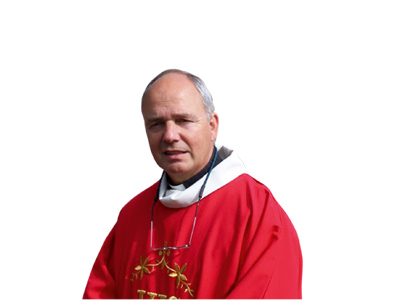
The Rev Mark Elston Zorab, 59, is honorary assistant curate at the St Arvans group of parishes, Monmouthshire, and also works as a chartered surveyor
Route into job My father (a London hospital consultant) encouraged me to attend the Royal Agricultural College, and I trained in the rural-practice division of the Royal Institution of Chartered Surveyors. Then, in 1994, I was ordained to serve as non-stipendiary curate -even St Paul earned his own living, as a tent-maker-at five rural churches, including St Deiniol's at Itton, where the Curre & Llangibby foxhounds are kennelled.
Best part of the job Ministering to all kinds of people in their different stages of life. We worship in the same Celtic and medieval buildings as our ancestors-at St Arvans, we have a wonderful 10th-century Celtic wheel cross and we're trying to raise £200,000 to renovate the roof.
Most challenging aspect Two of the churches have no electricity or road access and we walk across the fields in all weathers, so winter is always a challenge, but often very beautiful. Making time for everything can be tricky. I have a busy pastoral, family and business life and an active working cocker spaniel called Dot, who accompanies me to church and sits obediently at the back.
Proudest moment In the Church, pride is something to avoid. However, I love fishing for trout and salmon and, as a former master of the Curre, I continue to support the hunt, although I don't ride any more. Both Chepstow racecourse and the point-to-point course at Howick (where I used to race-ride) are within the parishes, so I go there, too-I'm very fortunate.
Advice for aspiring vicars The future of the rural parishes may largely rest with the properly trained, voluntary ordained ministry, so it could be you. Make time for your family and for daily prayer and do turn the mobile off sometimes, because you're never off duty.
The harbour master
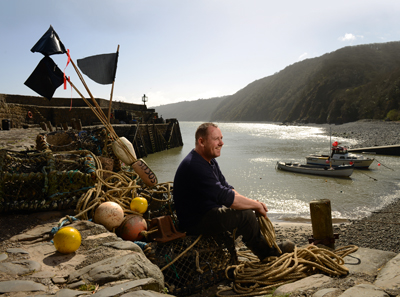
Stephen Perham, 48, is harbour master at Clovelly, north Devon
Route into job I'm a fisherman. My father was harbour master here and my older brother took over from him in 1983. There were a few interim harbour masters, then my cousin had the job, and then it was me. This is my 10th year.
Best part of job It's more of a privilege than a job. I have the oldest wooden boat here in Clovelly, and I love taking people out and showing them the harbour from the sea-that's the best way to see it. In the summer, we get a lot of visitors in their yachts; last year, I had one man who shouted up to me ‘I'm home!' when he arrived. They're a great bunch, very colourful. Most challenging aspect In 1998, two of our fishermen drowned and a couple of years ago, a lifeboatman died in an accident. In a small community, all these jobs become one job. There's also the fact that the fishing industry is changing and there aren't many young men coming in now. My hope is that the harbour survives.
Proudest moment Following on from my father is what makes me proud-the fact that my family has been involved for such a long time.
Advice to aspiring harbour masters I spend my days making sure the harbour runs safely and everyone is properly looked after. Clovelly is a very beautiful one - antique in many respects - but there are lots of regulations to adhere to. It's not just a pretty little place with a few boats bobbing around.
The ghillie
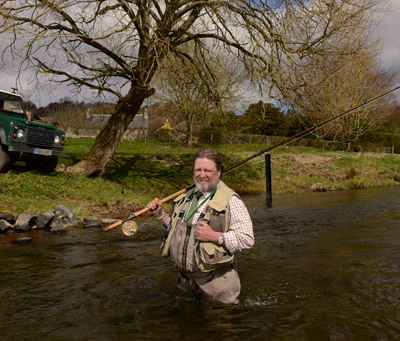
George Inglis, 60, is the Duke of Northumberland's ghillie at Dryburgh North, Borders
Route into job I didn't come through the traditional father-and-son route-I was a paying guest at Dryburgh for about 10 years when the ghillie had a stroke and I applied for the job. I thought I'd give it a year and see how it went-that was 23 years ago and I'm still here! I'd known from when I was 16 that I was going to get into fishing, however-I've always had a passion for it.
Best part of job Seeing people's enjoyment when they catch a fish, especially when a novice lands their first salmon on their first day on the river-that really gets me. I also take pleasure from doing bank maintenance in the summer, cutting the grass so it looks tidy. I had a good job in the building trade in Edinburgh when I was younger, but I wouldn't change this job for the world. I'm in a privileged position and I love it. I just hope I can keep working here until I'm 80.
Most challenging aspect Adverse weather conditions, particularly an east wind. Or when the river's too big or too low and you have to work hard to keep your guests' enthusiasm up.
Proudest moment When the Duke of Northumberland bought the beat in 2000, I thought it might mean a change of career for me. But he decided to take me on and I felt proud that he wanted to keep me. The Duke is as keen as mustard [on fishing] and brilliant to work for. We've got a great relationship and can have a bit of fun.
Advice for aspiring ghillies Take a day on the most expensive beat on the river where you're hoping to get a job. Get to know your beat- understand its heights and moods, do your homework and take advice from other ghillies.
The racehorse trainer
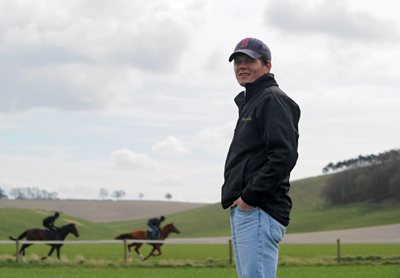
Andrew Balding, 40, trains mainly for the Flat at Park Farm Stables, Kingsclere, Berkshire
Route into job I was lucky enough to succeed my father [Ian Balding, trainer of Derby winner Mill Reef]. I'm the fourth generation of racehorse trainers in my family and grew up in and around it. I was so fortunate to inherit the yard from my dad, as the financial burden of training is massive to get established and not many people get an opportunity like that.
Best part of the job It's a great combination of an outdoor lifestyle in the morning and the fun, excitement and competition of the racecourse in the afternoon. The setting here is horse paradise. The yard, parts of which are historic-and the house, a redbrick Victorian property that I lived in as a child-is at the foot of Watership Down, surrounded by 600 acres of parkland and gallops on the Downs, which is lovely.
Most challenging aspect Dealing with the disappointment of poor results and injuries to horses. The worst part is having to telephone to tell the owner that something has happened to their horse. Happily, through developments in science and improved gallop facilities, injuries are rare these days, but they're something that we'll never be able to prevent entirely.
Proudest moment Any win at the top level. We've been fortunate to win Group One races in four different countries: England [Casual Look won the 2003 Oaks], Hong Kong, Dubai and Canada. Advice for aspiring trainers Be honest and upfront with your owners and patient with your horses. Andrew Balding (www.kingsclere.com) will be answering questions in the Bessborough Restaurant at Royal Ascot on June 22 (0844 346 0346; www.royalascothospitality.co.uk)
The head gardener

Yvonne Cannon, 51, is head gardener at Holker Hall, Cumbria
Route into job I started gardening as a very young child and had my own little plot at the top of a large garden in Bloxham, Oxfordshire. I would move plants around to trying to work out why they would or wouldn't grow so well. My first career was as a police officer, but that ended after an accident in 1995. Then, I studied horticulture at Berkshire College, and stayed on to teach. I also spent three years making gardens at the Chelsea Flower Show and worked in Private client gardening, until I saw an advertisement for this job. I knew the gardens well enough to believe that I could ‘do business' there, and felt I could learn a lot from gardening with Lord and Lady Cavendish in the difficult conditions.
Best part of job Walking through the garden gate each morning, and sharing the trials and successes with colleagues and the Cavendish family. Being outdoors, under the skies, every day-as soon as I enter a room, I feel the weight of the ceiling above me and the walls restricting me.
Most challenging aspect Budgeting, Rebudgeting and business planning. I very much enjoy the cut and thrust of the business part, but if I could do that on a bench looking out over the gardens, that would be great.
Proudest moment During my second year, Sid Banks, who had retired as head gardener some time before, came to help me with a query. As we walked through the gardens, I saw him glancing around and feared the worst. But then he said: ‘You'll do all right here.' Lord Cavendish recently wrote a book about gardening at Holker, and he kindly mentioned the part I've played here, not only in the gardens, but on a personal level.
Advice for aspiring head gardeners It's never too late. Also, to be a head gardener at this level, you have to know your budgets inside out and never exceed them, and be comfortable with driving everyone's development needs, including staff, casual workers, volunteers, yourself and the owners. (01539 558328; www.holker.co.uk) ‘A Time to Plant: Life and Gardening at Holker' by Hugh Cavendish is published by Frances Lincoln at £25.
The huntsman
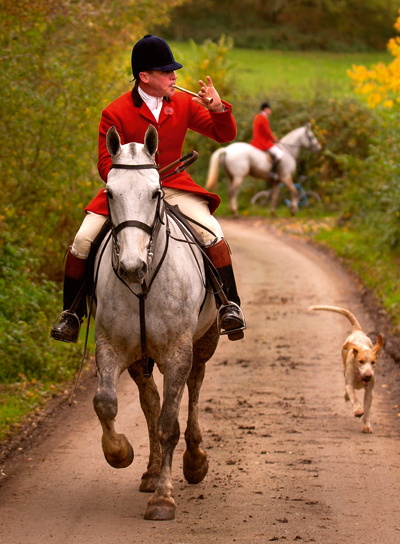
John Holliday, 45, hunts the Belvoir (Duke of Rutland's) hounds, which are kenneled at Belvoir Castle, Leicestershire
Route into job The fell packs in my native Cumberland sparked the enthusiasm. When I expressed this interest to my mother, she took me to visit the Cumberland Farmers' kennels. Midge Todhunter, the kennel-huntsman, showed me around and, on that day, sitting in the lodge surrounded by hounds, the deal was sealed. I had no doubt as to what the future held for me. Best part of job For the most part, I've enjoyed every single day of my career and have never considered hunting hounds as anything but a pleasure or even borderline hedonism. I regard my position as guardian of the Belvoir kennels as an honour.
Most challenging aspect A huntsman is an entertainer, there to produce sport for the field. Hitting the balance between ‘keeping the tambourine a- rollin' and allowing hounds enough time to work things out for themselves requires fortitude. You have to allow them to constantly improve and provide a consistency of sport, which means you have to have confidence in hounds and they in you. I have made (and continue to make) many mistakes, but I like to deceive myself that I got the balance about right a few years ago. However, working within the law [the 2004 Hunting Act], as it currently stands, is an appalling strain for all hunt staff.
Proudest moment I take pride in how the Duke's hounds hunt and any small part I play in maintaining the standard. I'm also proud of having my name on the same board as famous former huntsmen, such as ‘the three Gs': Goosey, Goodall and Gillard.
Advice for aspiring huntsmen Anyone who treats it as just a job will fail. It's a vocation and, in 2013, not one from which you'll retire rich- you hope that your reward will be in Heaven. Try offering your services to your local kennels during your spare time. If you're keen and not afraid of hard work, the staff will want to help you to progress. The MFHA also provides a bursary scheme (www.mfha.org.uk).
* Subscribe to Country Life and save; Get the Ipad edition
* Follow Country Life magazine on Twitter
Country Life is unlike any other magazine: the only glossy weekly on the newsstand and the only magazine that has been guest-edited by His Majesty The King not once, but twice. It is a celebration of modern rural life and all its diverse joys and pleasures — that was first published in Queen Victoria's Diamond Jubilee year. Our eclectic mixture of witty and informative content — from the most up-to-date property news and commentary and a coveted glimpse inside some of the UK's best houses and gardens, to gardening, the arts and interior design, written by experts in their field — still cannot be found in print or online, anywhere else.
